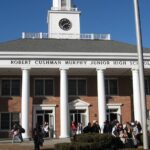Bias @ Bowdoin Documented
For years, claims of liberal biases on college campuses have run rampant. Peter Wood and Michael Toscano of the National Association of Scholars (NAS) set out to test these claims in a thorough investigation of Bowdoin College.
Today, Bowdon College offers a wide variety of majors, including Gender and Women’s studies, Africana studies, Gay and Lesbian studies Studies, Asian studies Studies, Latin American studies Studies, and Environmental Studies, as pointed out in a study of the college published by the National Association of Scholars. Interestingly, the common denominator that links these six “studies” majors together is the plight of oppression, making this the “main narrative of a liberal education.”
Outside of the classroom, an emphasis on global warming, climate control and the future of THE “green economy” is easily detectable in all aspects of campus life. Danica Loucks, the author of Bowdoin College Off the Record, observed that “Bowdoin’s main buzzword is probably ‘sustainability,’ and green efforts seem to permeate all parts of campus life.”
Wood and Toscano noted that “raising awareness is one of the most familiar tropes of storytelling at Bowdoin and a key tool in almost every social movement, large and small.” Bowdoin has a history of deprecating its past whether it be changing words to songs and poems in order to make them politically correct, or condemning past actions made by the college.
At Bowdoin College, sex and drinking dominate the social scene. Students are “free to express their sexuality as they see fit—insofar as the participants have gained consent.” Boxes of condoms inhabit every residential hall, further symbolizing the exploitation and openness of sex on the campus. Wood and Toscano believe that “in many respects, Bowdoin does more than condone the sexual freedom of its students. It actively encourages student sexual activity and facilitates it.”
With a pro-gay marriage administration, it’s no surprise that homosexuality is another ubiquitous theme at Bowdoin College. In fact, 8.64 percent of students identify as homosexual, nearly three times the national rate at American universities. Queer themed social house parties, film screenings, and coming out week are common occurrences on campus.
Over 30 percent of the Bowdoin Class of 2007 indicated that they had “no religious preference” on their college application. Years earlier, in 2001, “the Princeton Review ranked Bowdoin among the colleges at which ‘students ignore God on a regular basis.’”
Bowdoin consistently enrolls a low number of conservative students, as a whopping 76 percent of students planned on voting for Barack Obama in 2012. Interestingly, Wood and Toscano found that “a report conducted in August 2003 by the center for the study of popular culture Center for the Study of Popular Culture concluded that most students would probably graduate without ever having a class taught by a professor with a conservative viewpoint.”
Bowdoin student Thomas O’Brien summed up the true nature of Bowdoin by explaining that “real diversity fails at Bowdoin. Bowdoin has statistical diversity—geographic, sociological, racial, gender, even religious—it feels diverse. But if it has heterogeneity in its statistical makeup, it is intellectually homogeneous.”
Founded in 1794 and opened in 1804, Bowdoin College is a small Liberal Arts College set in the picturesque town of Brunswick, Maine. The school boasts alumni such as Nathaniel Hawthorne, Henry Wadsworth Longfellow, and Franklin Pearce. For the first half of the twentieth century, Bowdoin maintained a strict model of classical education.
According to Wood and Toscano, “beginning in 1969, Bowdoin had made the Bowdoin student the autonomous authority on the content of his education.” As the school reverted away from its roots, all aspects of Bowdoin became characterized by innovation, they aver.
Academically, Wood and Toscano found that despite Bowdoin’s standard liberal arts curriculum, academic disciplines stand as “artificial constructs” for students. At Bowdoin, the student’s choice reigns as the ultimate supreme and the most coveted knowledge lies in the connection of different topics.
Biases are evident at Bowdoin where “students are immersed in a curriculum that gives them at best a one-sided understanding of key concepts and issues.” Wood and Toscano’s study shows that Bowdoin is inherently embedded with ideals that characterize the American political left. In fact, Bowdoin stands a stanch example of “how personal beliefs can powerfully influence the content of the curriculum.”
Bowdoin’s strong emphasis on diversity led to a wave of underprepared students stumbling through the college’s rigorous curriculum year after year. This caused an underlying uneasiness amongst faculty and students. Bowdoin attempted to quietly solve this predicament through the implementation of “remedial courses for the least academically talented and the poorest prepared; remanding some students to rush English as a Second Language training; slackening—subtle or otherwise—in the difficulty of courses and the extent of requirements; and grade inflation to disguise the typically disappointing results of the previous measures.”
Ali Swee is an intern at the American Journalism Center, a training program run jointly by Accuracy in Academia and its sister organization, Accuracy in Media.
If you would like to comment on this article, e-mail contact@academia.org.




